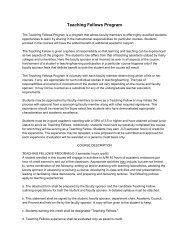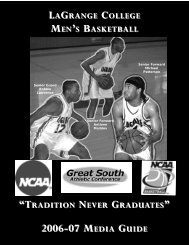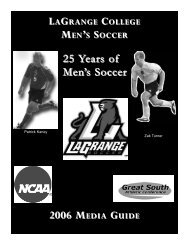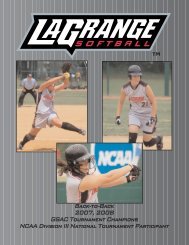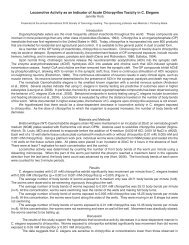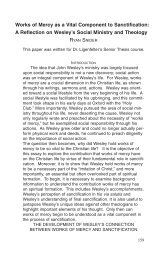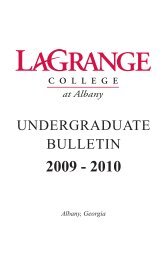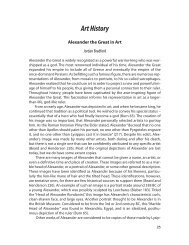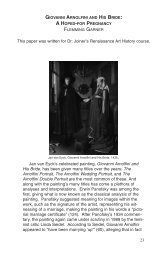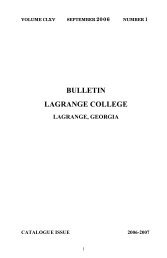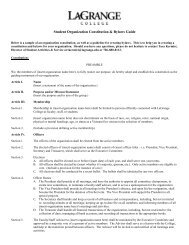The Speed of Light: Historical Perspective and Experimental Findings
The Speed of Light: Historical Perspective and Experimental Findings
The Speed of Light: Historical Perspective and Experimental Findings
You also want an ePaper? Increase the reach of your titles
YUMPU automatically turns print PDFs into web optimized ePapers that Google loves.
THE SPEED OF LIGHT<br />
high-speed nonlinear devices to generate harmonics. Since<br />
these measurements were based on frequency, they were ten<br />
times more accurate than wavelength-based measurements. 9<br />
<strong>The</strong>se measurements showed that the uncertainty largely<br />
stemmed from the asymmetry <strong>of</strong> the krypton line, upon which<br />
the current st<strong>and</strong>ard meter was based. It became apparent that<br />
the accuracy <strong>of</strong> the st<strong>and</strong>ard meter could be greatly improved by<br />
redefinition. <strong>The</strong> direct measuring the frequency <strong>of</strong> the 633 nm<br />
iodine stabilized helium-neon laser <strong>and</strong> the 576 nm spectroscopic<br />
line <strong>of</strong> iodine, along with many other such direct measurements,<br />
was the final step to redefining the meter. In 1983, the<br />
General Conference on Weights <strong>and</strong> Measures redefined the<br />
meter as the distance traveled by light in a vacuum over a period<br />
<strong>of</strong> 1/299 792 458 <strong>of</strong> a second. Consequentially, the speed <strong>of</strong><br />
light in a vacuum is defined as a constant, not to be changed or<br />
re-measured. This definition <strong>of</strong> the meter has remained strong<br />
because a definition based on a st<strong>and</strong>ard such as the krypton<br />
lamp can be continuously made more accurate without the need<br />
to form a new definition for the parameters. 11<br />
Modern Reproduction <strong>of</strong> Foucault’s <strong>Speed</strong> <strong>of</strong> <strong>Light</strong> Experiment<br />
Our first experiment in the LaGrange College Physics<br />
Laboratory was closely based on the 1862 experiment by<br />
Foucault. <strong>The</strong> equipment used consisted <strong>of</strong> the PASCO<br />
Complete <strong>Speed</strong> <strong>of</strong> <strong>Light</strong> Apparatus (OS-2961A). <strong>The</strong> experiment<br />
relates the angular velocity <strong>of</strong> a rotating mirror to a spectral<br />
displacement to determine the speed <strong>of</strong> light in a vacuum. 13<br />
In our experiment; a class 2 laser (PASCO 1508-1) with a 633<br />
nm helium-neon gas source <strong>and</strong> 0.8 miliwatt (10 -3 W) power<br />
output was used to generate our incident emission. Foucault’s<br />
original experiment used a st<strong>and</strong>ard inc<strong>and</strong>escent light source.<br />
<strong>The</strong> beam was focused through a 48 mm (10 -3 m) focal length<br />
lens placed 6.95 cm (10 -2 m) from the incident light source<br />
(which hereafter the incident source will be our reference origin<br />
for all values except the fixed mirror distance from the rotating<br />
mirror) <strong>and</strong> past a beam splitter placed at 18.22 cm. <strong>The</strong> laser<br />
beam was focused through a 252 mm focal length lens at 38.27<br />
cm <strong>and</strong> then directed into a rotating mirror at 83 cm, from which<br />
the beam was directed at an angle <strong>of</strong> 25º to a fixed mirror<br />
11.407 m away. <strong>The</strong> laser beam was reflected back into the<br />
rotating mirror, which was then reflected back into the beam<br />
190




